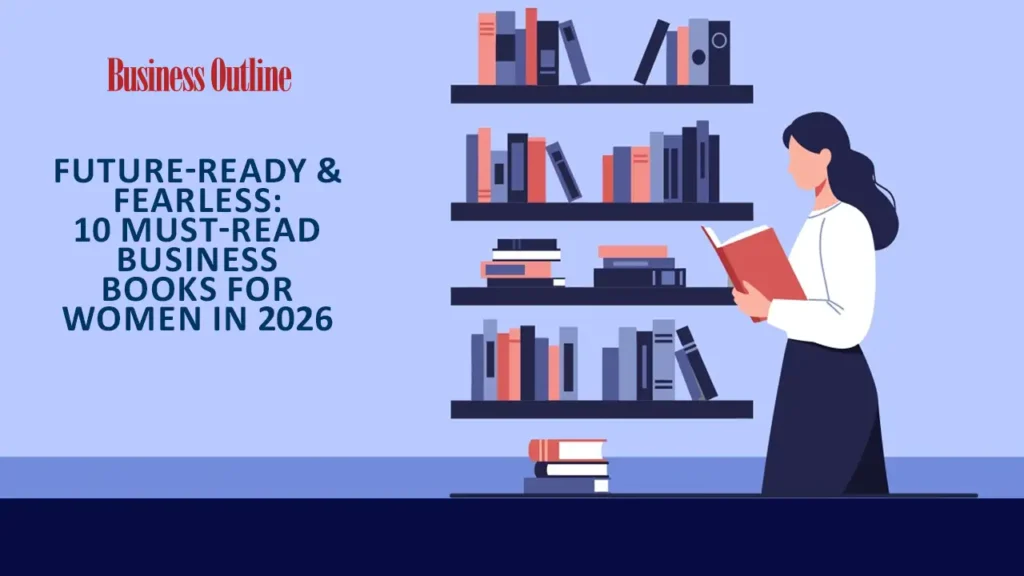Future‑Ready & Fearless: 10 Must‑Read Business Books for Women in 2026
-by Jaya Pathak
There’s a particular kind of ambition animating boardrooms and breakout rooms alike in 2026—restless, data‑literate, collaborative to the core, and unafraid to pull apart rules that no longer serve. The best business books for women this year speak directly to that energy. They sharpen judgment in volatile markets, help leaders earn trust in hybrid teams, and push founders to seek scale without surrendering values. Some are fresh takes. Others are sturdy companions worth revisiting precisely because the landscape shifted under our feet.
In this blog, we are going to discuss top 10 must-read business books for women in 2026. Here presenting the list:
1) ‘When Women Lead’ by Julia Boorstin
A modern leadership primer built from field reporting and rigorous interviews, this book profiles founders and executives who convert perceived “soft” skills—empathy, adaptability, community‑building—into hard business outcomes. It reads like a dossier of operating advantages women leaders bring to uncertainty. Not a manifesto. A manual. And in a year when capital is cautious and teams are distributed, the evidence that relational leadership beats bravado in real P&Ls feels unusually timely.
2) ‘The Mirrored Door’ by Ellen Connelly Taaffe
If you’ve ever felt over‑prepped and under‑seen, this is the scalpel. Taaffe dissects the subtle ways capable women self‑censor—seeking perfect readiness before visible moves—and replaces that loop with practical micro‑bets: pilot the pitch, test the narrative, get into the room earlier. The tone stays executive‑level, not pop psychology. To be fair, the tactics are simple; the discipline to apply them is the lift. That’s why it lands.
3)‘How Women Rise’ by Sally Helgesen & Marshall Goldsmith
There are three things which you must avoid- putting too much value on being an expert instead of building influence, reluctance to claim credit and trying to do too much yourself. What makes it durable is the specificity—scripts, scenarios, reframes you can actually try on Monday. Interestingly enough, the most senior readers often glean the most; the higher you go, the more your behaviour is the strategy.
4) ‘Build the Damn Thing’ by Kathryn Finney
A founder’s field guide written with the velocity of a sprint review. Finney is blunt on capitalization, customer discovery, and the unglamorous mechanics of distribution—especially for underestimated founders. It shines where many “startups” books fade: negotiating power from the margins, institutionalizing momentum, protecting your time. The subtext is equity, yes, but the text is enterprise building. No fluff. Just moves.
5) ‘The Memo’ by Minda Harts
Career advice that treats the workplace as it actually is for many women of colour: political, performative, and occasionally perilous. Harts offers unapologetic tactics for access—relationship capital, sponsor alignment, compensation command—without romanticizing the cost. A necessary counterweight to generic “confidence” bromides. If you mentor, manage, or sit in a C‑suite, read it as infrastructure for inclusion that works.
6) ‘Dare to Lead’ by Brené Brown
At first glance: a book about courage and vulnerability. In practice: a system for trust that scales across hybrid teams and high‑stakes decisions. The operational heartbeat—clear expectations, healthy conflict, post‑mortems that teach rather than punish—makes it unusually useful in 2026, when change fatigue is real and execution hinges on psychological safety. Call it soft power with hard edges. It travels well from founders to Fortune 500s.
7) ‘Invisible Women’ by Caroline Criado Perez
Not a traditional business book, yet indispensable. The data‑gap argument—products, policies, and systems built on male‑default datasets—has direct implications for strategy, product, and risk. If you touch design, AI, public policy, or healthcare, the examples will recalibrate your assumptions overnight. To be blunt, it’s tough to build for a market you don’t measure. This will change what and how you measure.
8) ‘Multipliers’ by Liz Wiseman
A leadership operating system for doing more with the talent you already have. Wiseman’s “Multiplier” versus “Diminisher” framing sounds tidy until you see your own habits in the mirror. Then it becomes a weekly practice: ask bigger questions, extend ownership, design stretch assignments, eliminate accidental throttles. The ROI case is straightforward—teams grow IQ points when leaders stop hogging oxygen. Results follow.
9) ‘Right Kind of Wrong’ by Amy C. Edmondson
Failure is not a vibe. It’s a taxonomy. Edmondson separates intelligent risk from sloppy error and shows how learning organizations create the conditions for the former while catching the latter early. For 2026’s realities—AI pilots, new market entries, shifting customer behaviour—this distinction is gold. The book also offers language for post‑mortems that protect dignity and surface signal. Very human. Deeply practical.
10) ‘Quit’ by Annie Duke
Strategic quitting is a performance skill. Duke, a decision scientist with the receipts, shows when exit beats endurance and how to design “kill criteria” before sunk costs blur judgment. Founders, fund managers, product leads—anyone allocating scarce time and capital—will find the pre‑commitment techniques bracing. To be honest, courage is often miscast as staying. Sometimes it’s knowing exactly when to leave.
Conclusion Future‑ready leadership is a habit, not a headline: choose two titles that match your mandate, translate each into one four‑week experiment, and review outcomes with clear measures—what to keep, fix, or stop; then repeat the cadence quarterly, because small, repeatable improvements beat sporadic heroics, and in uncertain markets that discipline turns insight into momentum and momentum into durable performance; no theatrics, just preparation, clarity, and follow‑through—the quiet edge that makes these books less inspiration and more infrastructure for the year ahead.
Read more: Top Business Magazine


